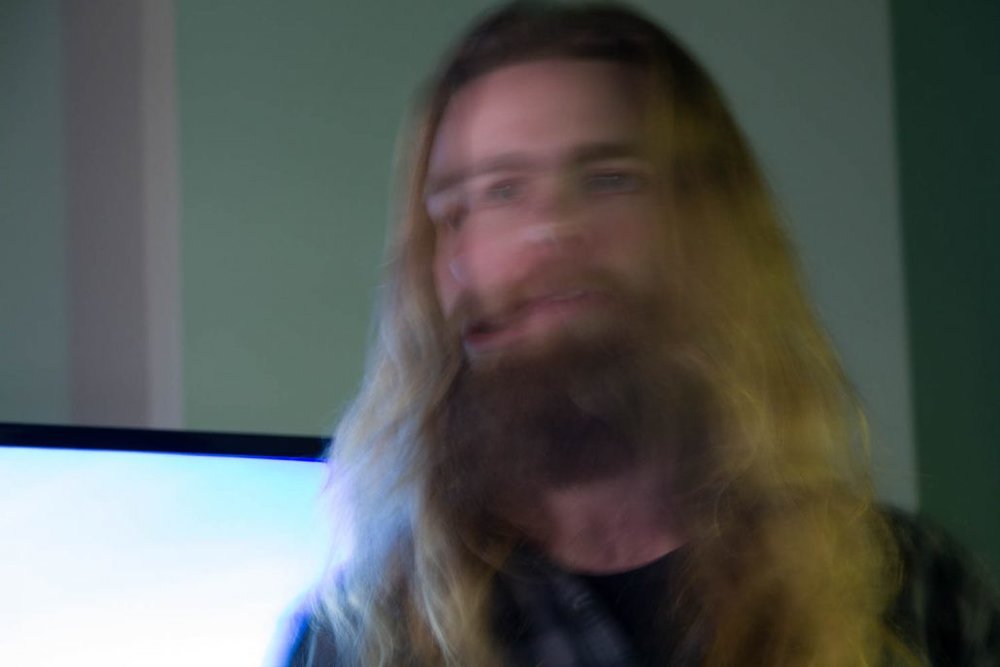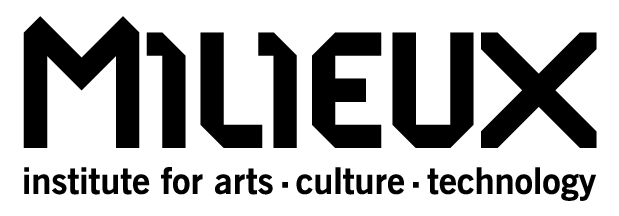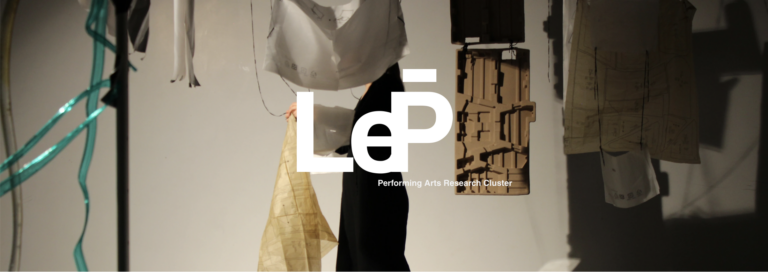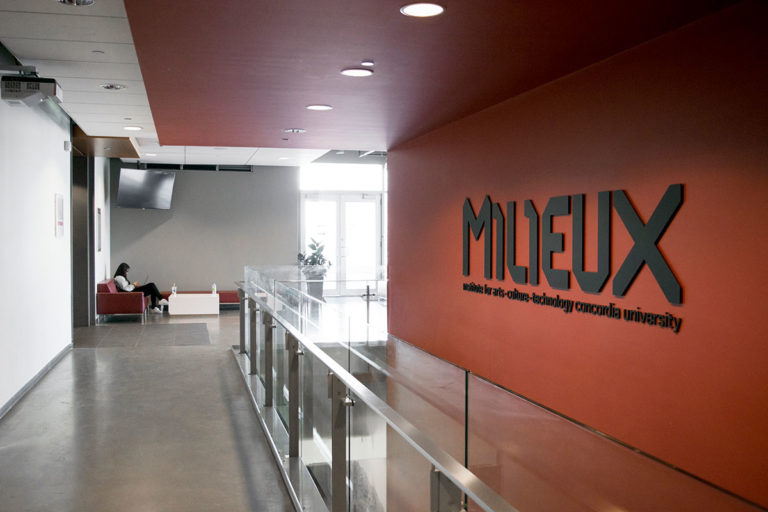By: Matthew Raymond, electro-acoustic musician and MA candidate in Philosophy at Concordia University. His research explores the history of metaphysics, temporality, and the contemporary resonances of ancient spiritual practice.
Using data and machinic processes to transform the temporal shapes of light, Milieux Institute member Alexandre Saunier is building new bridges between fine arts and tech.
I sat down with him to discuss his work on thinking about light from a variety of disciplinary perspectives. To this end he’s co-leading a workshop called Dynamics of Perception at ISEA 2020. Saunier’s work emerges from the Speculative Life cluster.
Learn more during the workshop, “Dynamics of Perception – Engaging With the Felt Experience of Tempoally Dynamic Algorithms,” on Oct. 17 at ISEA 2020 and follow our Twitter coverage at @Milieux_news.
Matthew: Can you give us a rundown on the workshop at ISEA? What’s it going to look like?

Alexandre: It’s going to be a three-hour workshop called Dynamics of Perception, and it’s going to be very hands-on in exploring a software we are developing right now called autonomX. It’s a software addressed to artists and students, mostly in the media arts, to allow easy and intuitive access to dealing with lifelike processes through a graphical interface.
To give a bit context, this is one of the outcomes of a three-year research project funded by the FRQSC called Dynamic Light, directed by Chris Salter that I co-wrote and organized. It was a big project that includes people from all around the world. The idea is to think about how to harness and express the temporal dimension of light from artistic, theatrical, technological and anthropological perspectives. So, the anthropology side, the part about perception and relating to means of creation is what we are going to dig into with the workshop, as well as the practicalities of using the autonomX software.
M: What brought you to Concordia? How did you get involved in working with light?
A: I began my training in mathematics and physics. After studying that I moved onto learning sound engineering for music, cinema, radio, you name it. It was at that time that I got involved with the digital arts, got away from sound, and started thinking, “You know what, I’m actually going to earn a living doing electronics for artists and making art.”
Out of some of those projects I came to Montreal, twice actually. I discovered Concordia and what would eventually become Milieux, and I got introduced to some artists who were doing pretty cool stuff. I thought this would be the perfect place to do a PhD, because I love making things but I also had a lot of questions that I wanted to dig into.
Montreal is a really great environment when it comes to technologically-based art, and there is a kind of easiness and support that I didn’t find when I was in France. It’s changing of course, but five or six years ago you still had a really clear divide between the fine arts and the techniques. An academic institute like Milieux, that openly supports arts, technology and culture, wasn’t that easy to get into in France at the time.
M: What were the questions that pulled you toward a research-creation PhD?
A: There were maybe two trends. One was a frustration with the art milieu I was in, where you had the divide I mentioned between art and technique. So, there was something there I wanted to explore, which was a question of practice and what it means to be an artist when you work closely with technical stuff.
My math background refined my abstract thinking, but I wanted to understand how to merge and articulate the theoretical reflections with the actual material practice.
«I needed to find ways to frame and reflect on what it means to get your hands dirty, to follow an artistic idea when there’s paint everywhere and you’re trying to program something that isn’t really working. »
On the other side, which is tied more to the specific practice I have, is the question of sense and perception of affect. Why do we feel emotional content in mediums that are totally non-human, like light and code? Even more specifically, what do those machinic rhythms, temporal shapes or movements do to us?
M: How has your relationship with light changed? Do you feel like you have a different perspective on your everyday experience of light?
A: Well, you’ve got artificial light and natural light. Obviously, a lot of our experience is based on natural light, and to be honest I don’t think my relation to it has changed all that much. However, I remember I spent a couple of weeks rehearsing in The Black Box at Concordia, and we were doing this work with really low-intensity lighting, just at the frontier of perception. You aren’t really sure if you are seeing light anymore or if you are just seeing the organic noise from your whole optical system. It was really meditative.
At the end of the day, after being in The Black Box, I would walk down St. Catherine with all those flashing neon lights. It kind of struck me actually that using light for art is a way of world-making. I was trying to create a work using light that I would like to live or experience or inhabit. I think my relationship with light tends in that direction. The more I experience with light, the more I want to create a world, a space, an atmosphere that I can develop and transform.
M: How did your practice change in the transition from composing with sound to composing with light?
A: Strangely, I don’t feel much of a difference. But maybe I should clarify, because most of the time, when I talk about light, I’m not sure that I’m talking about exactly the same things as other people. What interests me in light is its temporal shapes, its dynamics, its flashing, its modulations and transformations. Most of the time when people talk about light, they are talking about forms, shapes, colors, pictures, about things that are static, and most of the vocabulary we have for light revolves around questions of shape, questions of color, questions of transparency…
I’m much more interested in the rhythms and temporal shapes. In that sense, I don’t find much of a difference with music. They both are lived experiences that occur in time with specific temporal dynamics. In music, that dynamic might be a tremolo, it might be a crescendo or the strumming of a guitar. In light it could be a color change, a movement in the light, or a burst of intensity.
I understand composing more as figuring out a way to put together different dynamics, different rhythms and mesh them together in a whole that lives in times. Sound and light are of different material, but they both address the temporal sense in the human being, and the perception of temporal shapes that affect us. You can go from abstract synthesis and colours, to concrete voices and videos, and composing still be all about their temporal organization, their hierarchies and layering
M: You mentioned a couple ways in which you use temporal dynamics to build out composition elements. What specific techniques do you employ when trying to create a mood, tell a story or achieve an experiential effect?
A: You could start with a simple example. If you were to imagine a light bulb and you wanted to create something like surprise, how would you do that? How would you express that a light bulb is surprised? First you might imagine a human, and maybe the human does a little jump when it’s tapped on the shoulder, and that little jump embodies surprise.
If you begin to really abstract, that jump of surprise has a shape. It is a burst of movement, and so you can begin to play with that. From there, you can start to ask what would happen of those temporal shapes if you express them with light—would a burst of light intensity express surprise? A light moving with slow oscillations, embodying a feeling of calm for example, will put you in a totally different mood than if you have a fast-stroboscopic flashing. So, different temporal shapes affect us in different ways and can generate widely different feelings.
If you look at everyday life, and the temporal shapes that arise in the world, and try to simply reduce them, reinterpret them through light, there is at some point a form of resonance that can happen. It’s about working with these correspondences to try and figure out the atomic temporal elements and structures that compose lived experiences. And then again, sometimes it works beautifully and sometimes it just doesn’t.
M: We’ve talked a lot about light, but I know that the other main portion of your work deals with algorithms. How do these two pieces come together for you?
A: Well, actually, it started there for me.
I became really interested in using data and computer processes to transform and manipulate light. I was fascinated by the fact that these machinic rhythms and temporalities have nothing to do with us, with what a human can do. They are machine generated, and yet they still have the power to affect us.
And so of course I can get inspired from nature, or everyday life, and bring that into my work. But I also became really interested in seeing what these machines can generate. And that’s where the other aspect of my practice lies, it is like opening a door to another machinic world. Once you actually start to play with algorithms, they generate things that you don’t expect and it becomes a game, trying to dig into them and play with them until you find that movement that actually brings about something that is expressive.
M: Does that mean you would view yourself as more of a collaborator with the algorithm?
I actually credit my works as collaborations. For example, I did a performance with Chris in the Netherlands last November, which was for two human performers and six neural nets. Or another project in Barcelona that was a performance for a network of fifteen neural networks and five moving lights. here’s a form of collaboration, which is definitely not based on control.
I would say an easy analogy is to imagine working with an actor or a dancer. The actor has a script that says they need to walk through the room. And one actor would walk one way, and another actor would walk another way, and they both would have walked across the room. You “controlled” them because you gave them a script that tells them what to do, but you also don’t control them because you don’t tell them how to take each and every step. Some algorithms are extremely step-by-step, extremely deterministic, and they create sequences of really controlled steps. But once you start working with more autonomous, emergent or self-organizing processes, I think it turns into a form of collaboration, in which you give away a kind of control and you grant the machine the ability to perform.
I think performance is really important here actually, because it happens in real time and you can’t retouch it and change it. It is a game of back and forth, of giving something to the machine, and then the machine gives you something back. Until at some point you can say, “That’s a good interpretation of the script I had in mind”.
The Speculative Life Cluster is speculative design research cluster at the intersection of art and the life sciences, architecture and design, and computational media. Learn more about the group on their website.



